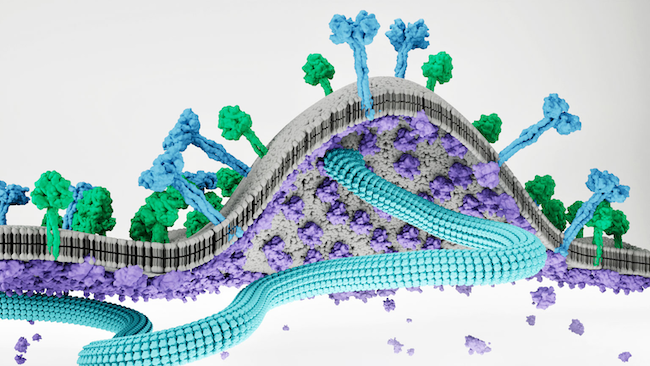Nipah
Nipah virus is paramyxovirus carried that can pass between people and infected animals, such as fruit bats or pigs. The virus is related to pathogens that cause measles, mumps, and a croup-associated flu virus in humans, as well as Newcastle disease and ovine rinderpest (peste des petits ruminants) in livestock. Nipah virus is endemic to regions of Southeast Asia, India, and Bangladesh. People living in relevant regions are cautioned to avoid infected animals or products they have contaminated, such as palm sap, and to practice good hygiene.
Nipah virus kills 40–70 percent of those infected by attacking cells in the respiratory or nervous systems and causing symptoms of fever, headache, and nausea, which often progress to fatal encephalitis. Patients with Nipah virus have few treatment options. Drugs such as ribavirin, which ameliorate symptoms of some viral infections, are minimally effective against Nipah virus infection, and there is no approved vaccine, although some candidates have been found effective in animal models.
Our Approach
Researchers at La Jolla Institute for Immunology (LJI) are advancing Nipah vaccine and therapy development by capturing high-resolution images of the virus’ molecular structure. This structural virology research is led by LJI Professor, President, and CEO Erica Ollmann Saphire, Ph.D. MBA.
Dr. Saphire’s team has already shed light on several potential targets on Nipah virus, including multifunctional phosphoprotein, called P, which executes numerous virus functions. In 2014, the researchers solved the structures of specific regions of the P protein that appear essential for viral replication in host cells. Their work shows how antibodies and other immune factors might target P to neutral Nipah virus.
Dr. Saphire’s lab has also revealed the importance of two particular structural features on Nipah virus: a basic patch and a kink in the protein. In a 2019 study, the team showed that these structural features are important for the Nipah virus life cycle. This means that targeting these regions through a vaccine or therapy may stop infection. These regions are also conserved in the related measles and mumps viruses. Saphire is now illuminating these structures to provide new avenues for broad-spectrum antiviral defense.
In a 2022 study, Dr. Saphire and her colleagues captured high resolution image’s of Nipah’s matrix (M) protein. Their work reveals exactly how the the M protein directs virion assembly in host cells—and how new copies of Nipah virus “bud” off to break away from the infected cell and further spread the infection.
In 2024, the Saphire Lab published a groundbreaking Science study showing how measles virus, a close relative of Nipah, fuses with host cells. Their work revealed how an antibody can block this fusion process. The scientists hope this discovery can guide measles therapy development—and prove relevant for Nipah virus research as well.
Learn more:
Related News
- Research News


